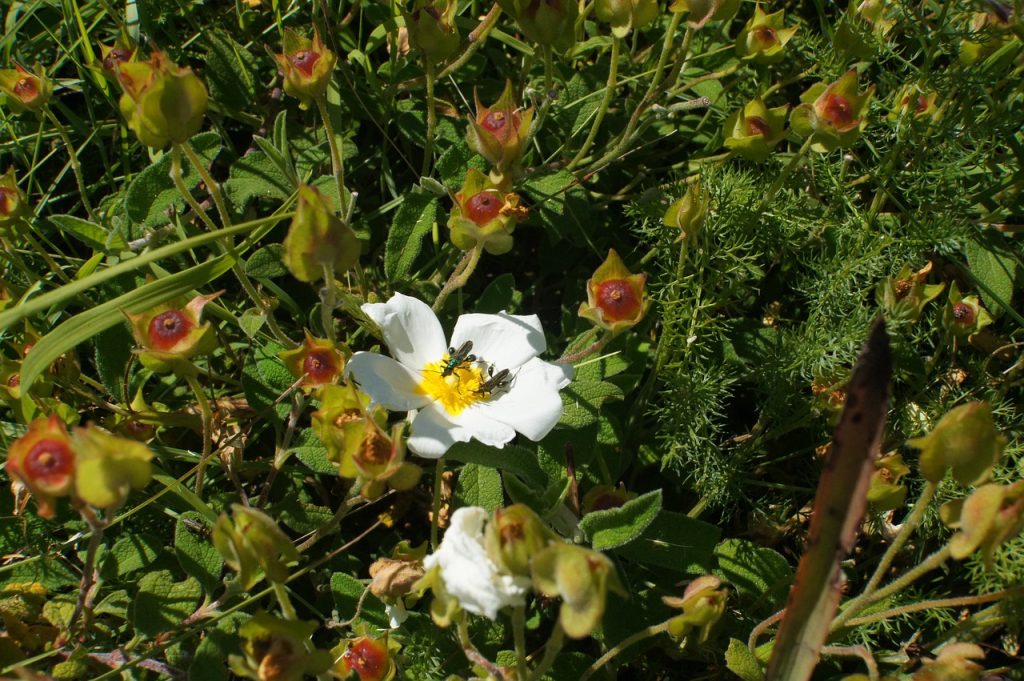Rock Rose (Cistus spp.)
Rock rose, belonging to the Cistus genus, thrives in the Mediterranean region’s dry, rocky soils. These evergreen shrubs grow 3 to 5 feet (1 to 1.5 meters) tall, with a dense, bushy habit. Their leaves are aromatic, sticky, and covered in fine hairs, which help retain moisture in hot climates. It produces striking, crinkled flowers in shades of white, pink, or purple, typically blooming in spring and early summer. The flowers, though short-lived, appear in abundance, attracting pollinators like bees and butterflies.
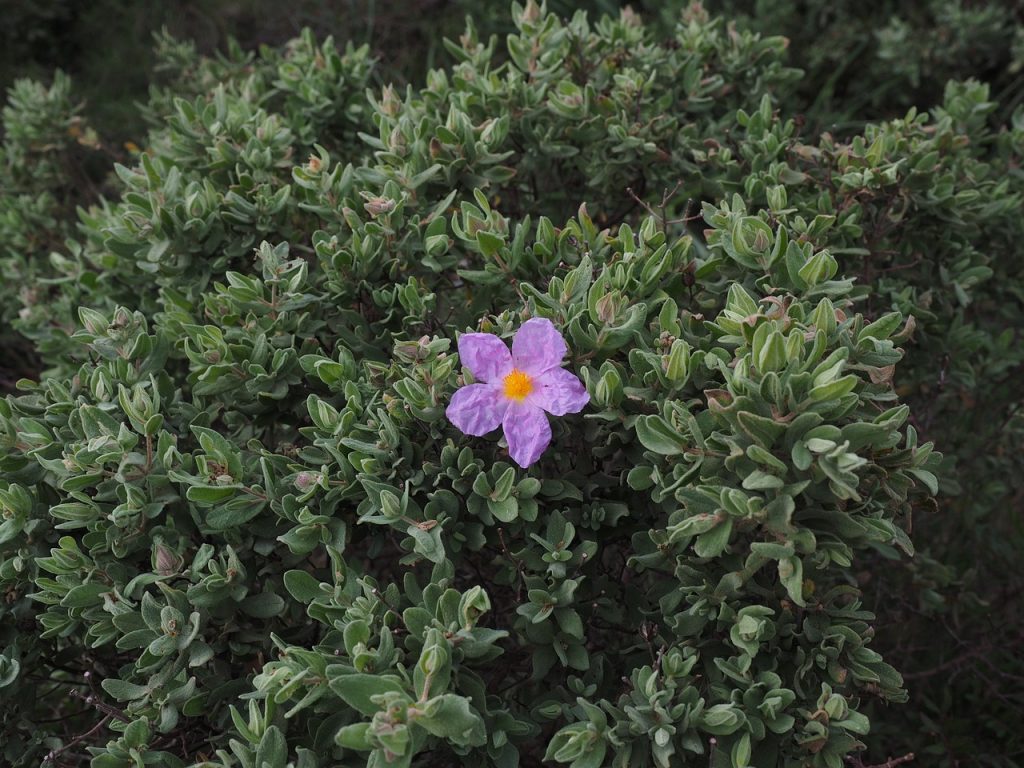
Rock Rose adapts well to poor soils and requires minimal water, making it a resilient choice for gardens in dry climates. Its drought tolerance and ability to stabilize soil make it valuable for erosion control. Historically, people extracted labdanum, a resin from the plant, for use in perfumes and traditional medicine. This shrub remains popular in ornamental landscaping, valued for its hardiness and showy blooms.
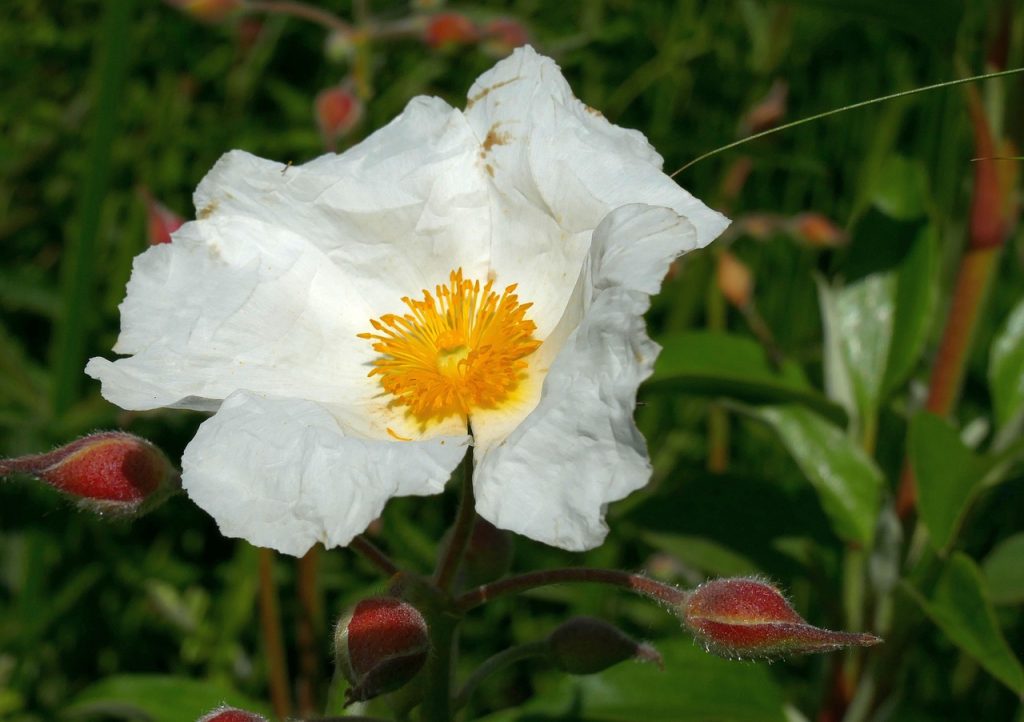
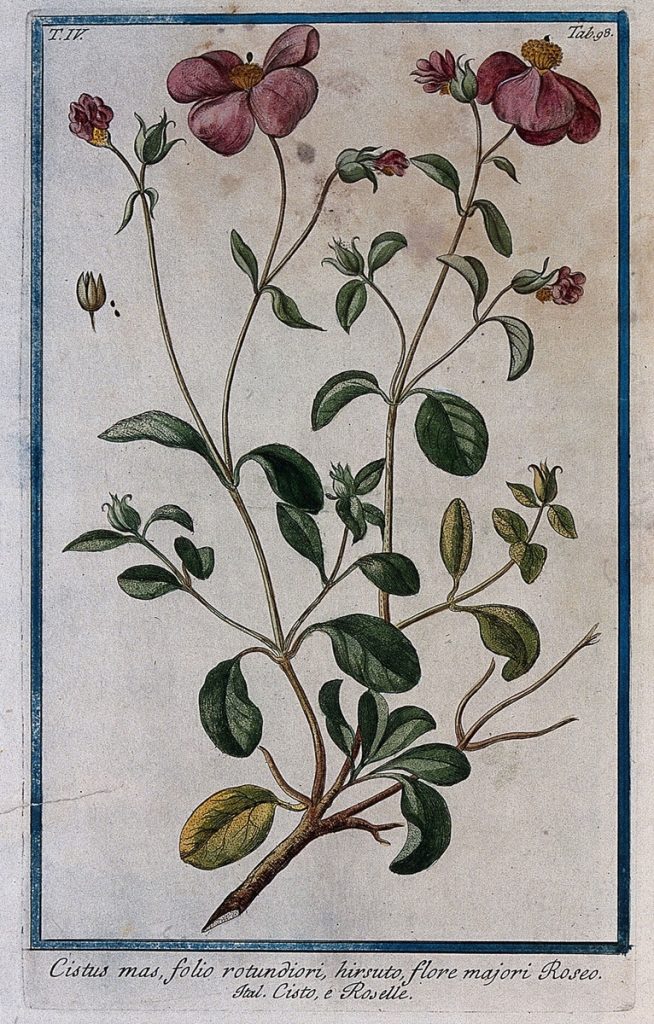
Scientific Classification
| Kingdom | Plantae |
| Clade | Angiosperms |
| Clade | Eudicots |
| Order | Malvales |
| Family | Cistaceae |
| Genus | Cistus |
| Scientific Name | Cistus spp. |
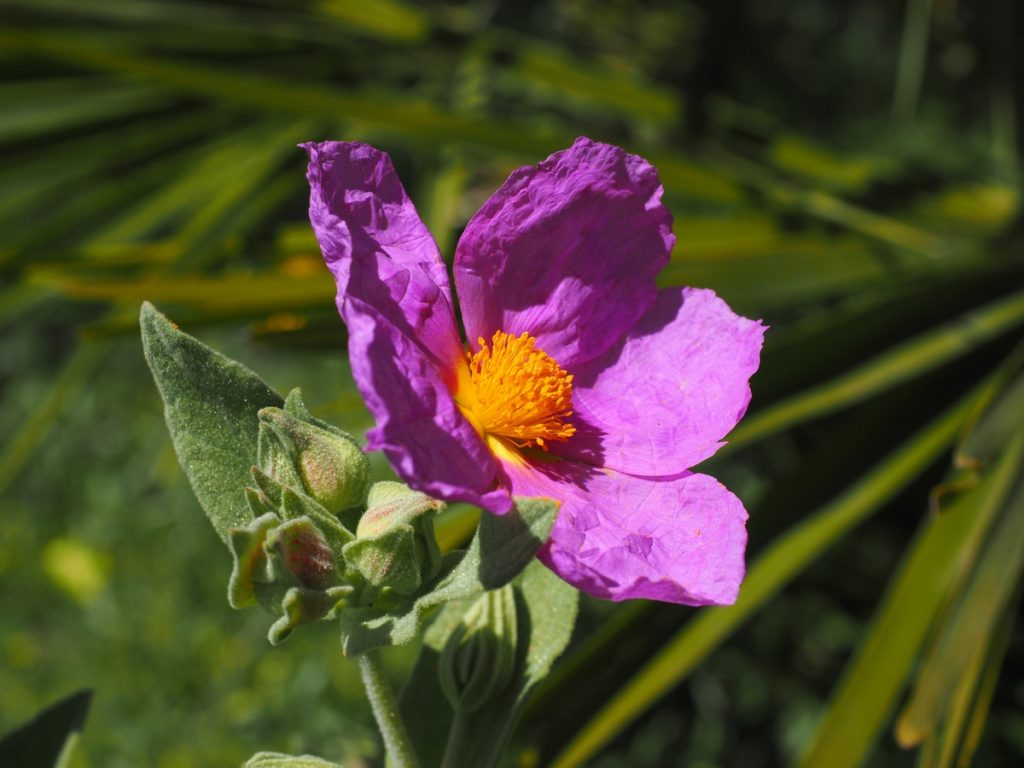
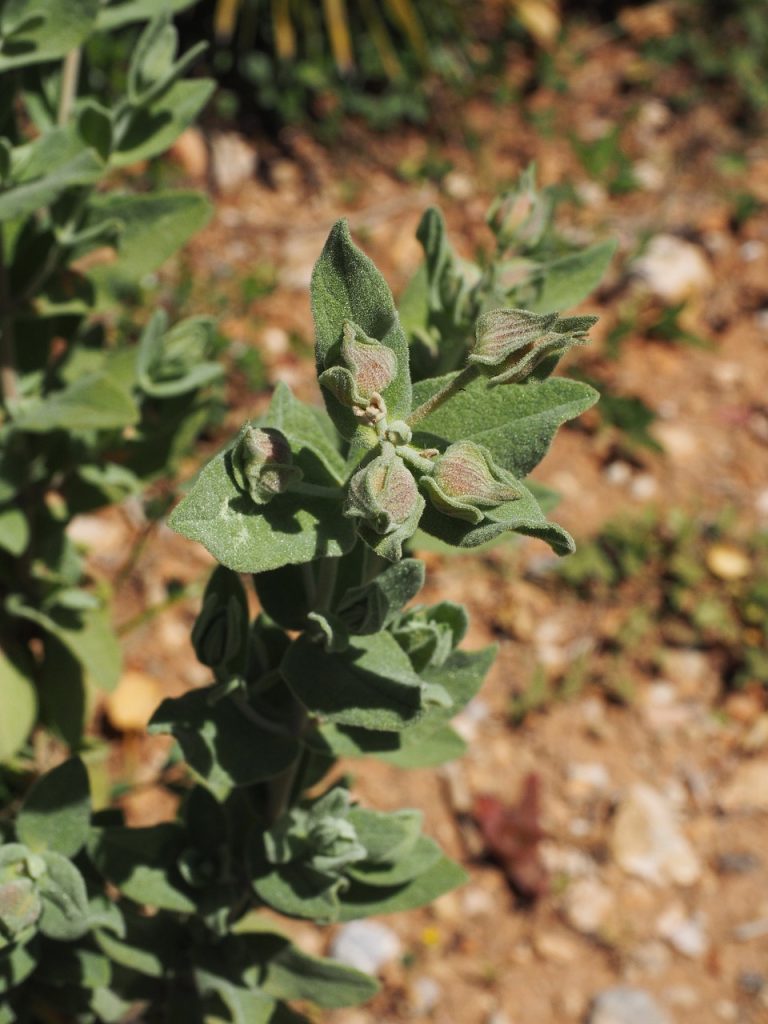
Quick Information
| Plant Type | Evergreen shrub |
| Identification | Height: 3 to 5 feet (1 to 1.5 meters) tall Leaves: Aromatic, sticky, fine hairs, grayish-green Stem: Woody, branching stems Flowers: Crinkled, 5-petaled, white, pink, or purple, bloom in spring and early summer Roots: Shallow, spreading root system Growth Habit: Dense, bushy form Crown: Compact and rounded |
| Distribution | Native to the Mediterranean region |
| Habitat | Dry, rocky soils, often found in scrublands and coastal areas |
| USDA Hardiness Zone | 8 through 10 |
| Growth Rate | Moderate; grows 12-24 inches (30-60 cm) per year |
| Lifespan | Long-lived; typically 20-30 years |
| Growing Conditions | Sunlight: Full sun Soil: Well-drained, rocky, poor soils Water: Low water needs, drought-tolerant |
| Drought Tolerance | High; adapted to dry Mediterranean climates |
| Diseases | Susceptible to fungal infections in overly wet conditions |
| Pests | Generally pest-resistant, though aphids and scale insects can occur |
| Reproductive System | Self-seeding; produces capsules that release seeds |
| Propagation | Through seeds and cuttings |
| Wildlife Value | Attracts pollinators like bees and butterflies |
| Uses | Erosion control, ornamental landscaping, resin (labdanum) production |
| IUCN Conservation Status | Not currently listed as threatened |
